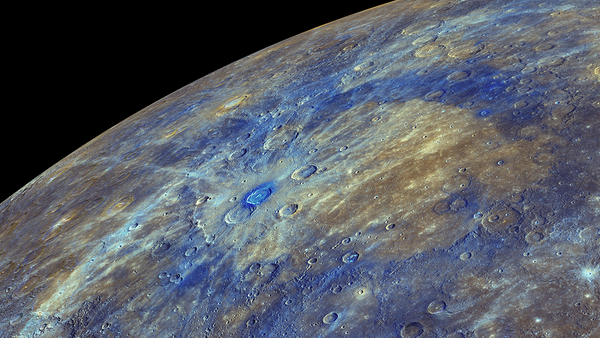Sputnik has discussed the launch with Professor Dave Rothery, a Bepi scientist from the UK's Open University.
Sputnik: How excited are you about the BepiColombo launch?
Dave Rothery: We’re very excited, the launch went pretty smoothly as far as I can see and we have a selfie picture of the spacecraft in orbit about the Earth with its solar panels deployed which is very important because we need that solar energy to drive it and take us all the way to Mercury, so things are looking good.
Dave Rothery: Well there is a Japanese orbiter called MIO which we set spinning and that has magnetometers, electrical sensors and particle detectors, and an ultraviolet detector, that will concentrate on the magnetic field and the particles around Mercury.
The bigger spacecraft — Mercury Planetary Orbiter (MPO), which will be operated by the European Space Agency when it gets there, has something like 11 instruments, there are visible cameras, infrared cameras which have never been flown to Mercury before, there's a British built X-ray Spectrometer (Mixs) which will measure the chemical elements across Mercury’s surface in a way that's never been done before.
There’s a Russian supplied Gamma-ray and Neutron Spectrometer, MGNS, provided by IKI, the Russian Space Agency, and that will look at radioactive elements on Mercury and also some elements that emit radioactivity because they’re hit by cosmic rays. And between the British instrument Mixs and the Russian instrument MGNS we hope to get a good handle on the carbon of Mercury because there are indications that Mercury's earliest crust may well have been carbon. It's now mostly deeply buried and turned up by impacts and we will be studying the carbon.
Sputnik: It's obviously very, very exciting for you and your team and all those people who are interested in astronomy. Let’s ask you the technical details with regard to the mission, what mysteries of the small planet can the mission resolve?
Dave Rothery: It’s a very well equipped mission, we’ve learned from the recent NASA Messenger mission that we just don’t understand this planet Mercury.
We know it’s a dense body so it has a very large core and a very thin amount of rock around it, so why doesn't it have the same ratio of rock to iron as a planet like the Earth, or Mars or Venus?
And then there are patches at the surface which are being removed into space in a much more gently way where we think the chemical bonds have been broken.
What happens in these areas that we call “hollows” is that a 10 or 20 meters depth of material is stripped away across an area of a few hundred meters or a couple of kilometers across and you're left with steep-sided flat bottom depressions which are still widening today, so that’s volatile as well in a sense, but chemically it’s unstable at Mercury's surface.
Sputnik: Lots of questions that hopefully are going to be answered. I think another interesting element of this is the exploration of the nearest planet to the Sun. Just try to explain to our listeners the facts and the importance of gathering as much information as possible on the make up of this planet, that is obviously the nearest to the Sun, and what you hope to achieve from this new information?
Dave Rothery: It is the nearest to the planet to the Sun and we're no longer sure that it began life as the nearest planet to the Sun.
Its richness in volatile materials is an indication that it may have began further from the Sun, maybe further than the Earth is at present. On its way inwards it could’ve collided with the Earth or Venus and that's what could’ve stripped it of most of its rock but left it still with volatiles. We don’t know this, so until we understand its composition we're going to still be puzzling where Mercury began life.
Its position close to the Sun means we can study the interaction of the solar wind, this is the charged particles streaming off the Sun, with the planet very well, because Mercury like the Earth, but unlike Venus or Mars, has its own magnetic field, part of its core is molten.
Another reason why Mercury being so close to the Sun is so interesting is exoplanets; these are planets going around other stars. We know that most stars in our galaxy have planets, it’s pretty clear from the statistics we've now got, and the easiest exoplanets, planets of other stars, to detect are those that are close to their stars, Mercury isn’t actually all that close to the Sun compared to many of the exoplanets we’ve seen, but certainly by studying Mercury we will understand rather better the exoplanets that as astronomers we need to study with telescopes.
Views and opinions expressed in this article are those of Dave Rothery and do not necessarily reflect those of Sputnik.






